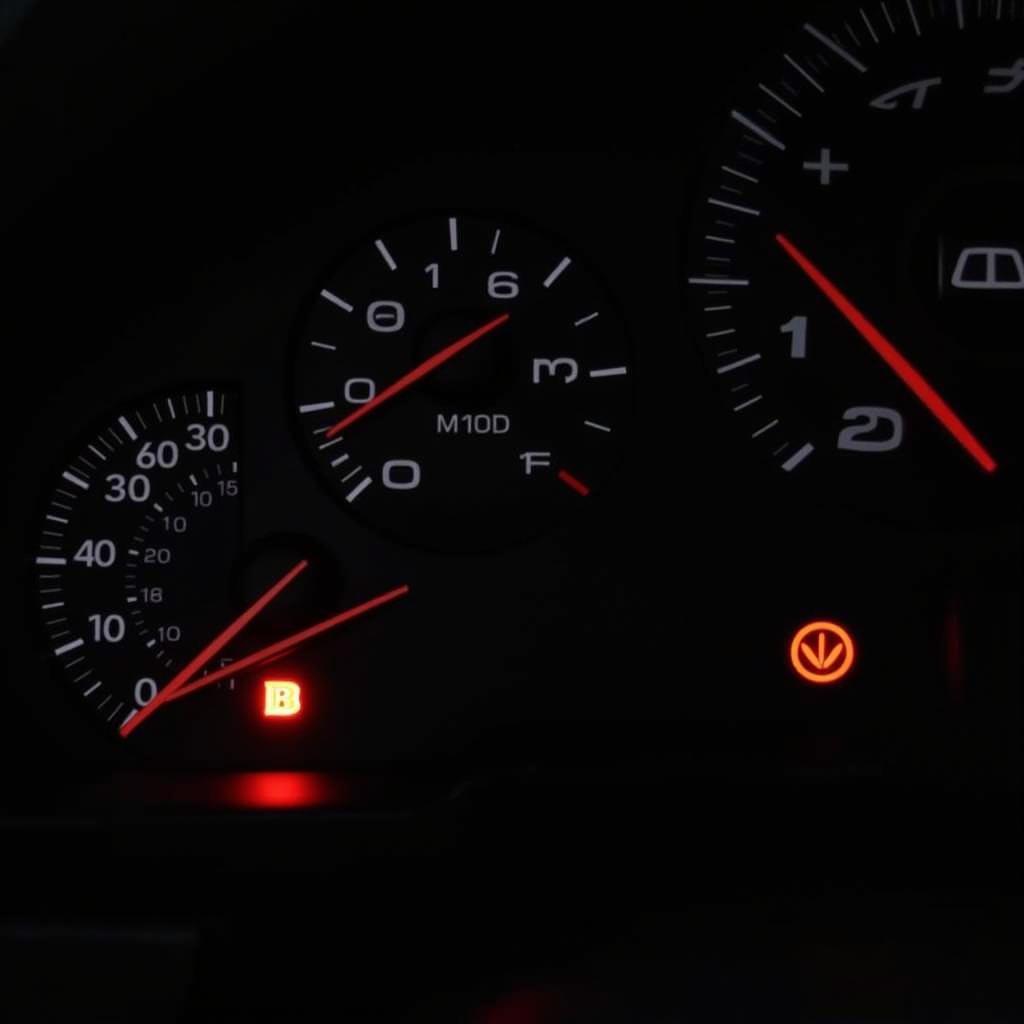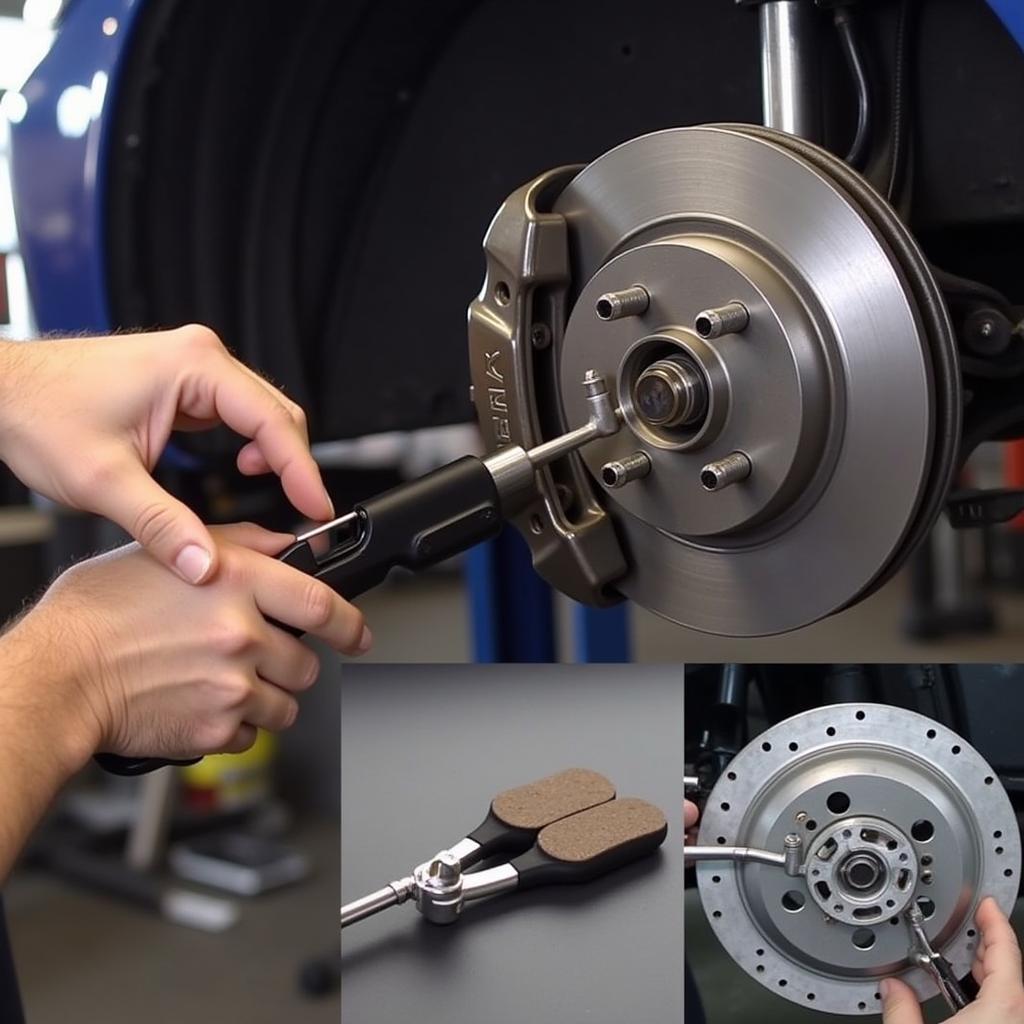The dreaded BMW brake pad warning light has illuminated your dashboard. What does it mean? How long can you safely drive with the BMW brake pad warning light on? This article will delve into the complexities of this warning, offering expert advice on diagnosis, solutions, and how to avoid further complications. We’ll explore everything from the underlying causes to the potential consequences of ignoring this crucial signal.
If you’re experiencing a BMW brake pad warning light, it’s crucial to understand the potential implications and address them promptly. While you might be tempted to ignore it, especially if your brakes seem to be working fine, this warning shouldn’t be taken lightly. Ignoring the light could lead to more serious and costly repairs down the line. For instance, you can check out this resource on BMW E92 error in brake-pad sensors warning.
Understanding the BMW Brake Pad Warning Light
The brake pad warning light is part of your BMW’s sophisticated onboard diagnostics system. It’s designed to alert you when your brake pads are nearing the end of their lifespan. This system typically uses sensors embedded within the brake pads themselves. When the pads wear down to a certain point, the sensor triggers the warning light on your dashboard.
What Triggers the Warning Light?
Several factors can trigger the BMW brake pad warning light. The most common is worn brake pads. However, a faulty sensor, damaged wiring, or even a low brake fluid level can also illuminate the warning. Understanding the potential causes can help you determine the urgency and the appropriate course of action. Remember, your safety and the safety of others on the road depend on a properly functioning brake system.
How Long Can You Drive with the BMW Brake Pad Warning Light On?
While it’s difficult to give a precise timeframe, driving with illuminated brake pad warning light is not recommended. It’s best to address the issue as soon as possible. Continuing to drive with worn brake pads can damage the rotors, leading to costly repairs. In extreme cases, it can compromise your braking ability, creating a dangerous situation for you and other drivers. You may find this article on the BMW Mini brake pad warning light helpful.
Factors Affecting Driving Distance with the Warning Light On
Several factors influence how long you can drive after the warning light appears. Driving style, road conditions, and the overall condition of your braking system all play a role. Aggressive driving habits wear down brake pads faster. Similarly, driving in hilly or mountainous terrain puts more strain on the brakes.
 BMW brake pad warning light illuminated on the car's dashboard
BMW brake pad warning light illuminated on the car's dashboard
“Ignoring the brake pad warning light is like ignoring a ticking time bomb,” warns John Miller, a seasoned automotive technician with over 20 years of experience specializing in BMW diagnostics. “It’s always best to err on the side of caution and have your brakes inspected by a qualified professional as soon as the light comes on.”
Diagnosing the Problem
If your BMW brake pad warning light is on, the first step is to determine the underlying cause. A visual inspection of the brake pads is a good starting point. You can check the brake pad thickness through the wheel spokes. If the pads appear thin, they likely need replacement. However, a professional inspection is recommended to accurately assess the condition of your brakes. You can reset the BMW 5 series brake pad warning light after replacing the pads.
Using Diagnostic Tools
Advanced diagnostic tools can provide more detailed information about the brake system. These tools can read the error codes stored in your BMW’s computer, pinpoint the exact cause of the warning light, and help identify any other potential issues. This level of diagnostic precision allows for targeted repairs and avoids unnecessary replacements.
 Mechanic replacing brake pads on a BMW
Mechanic replacing brake pads on a BMW
“Modern BMWs have highly advanced braking systems,” explains Susan Davis, an automotive engineer specializing in brake system technology. “Using the right diagnostic tools is essential for accurate troubleshooting and effective repairs. A proper diagnosis can save you time and money in the long run.” It’s worth noting that brake issues can sometimes be related to other systems, as seen with a Warn 44 with disc brake.
Resolving the Issue
Once the problem has been diagnosed, the next step is to resolve it. This might involve replacing the brake pads, sensors, or other faulty components. If the issue is related to low brake fluid, topping off the fluid and checking for leaks is necessary. Regular brake maintenance, including fluid flushes and inspections, can help prevent future problems. Sometimes, you might experience a warning related to other brake components, such as the BMW E60 brake fluid warning.
Conclusion
The BMW brake pad warning light is a crucial safety feature that shouldn’t be ignored. Addressing the issue promptly can prevent more serious and costly problems down the road. While you might be able to drive for a short period with the warning light on, it’s essential to have your brakes inspected and repaired as soon as possible to ensure your safety and the safety of others on the road. Remember, maintaining a well-functioning brake system is paramount for a safe and enjoyable driving experience.

